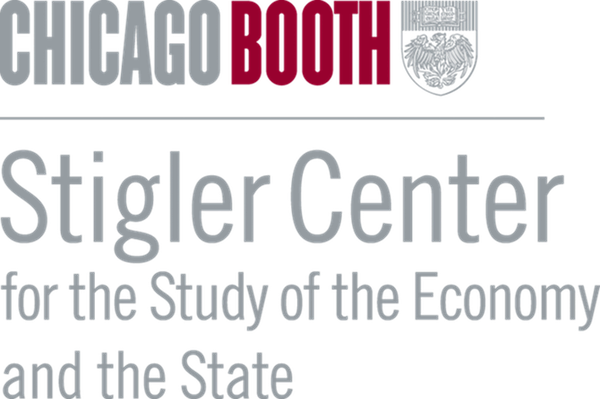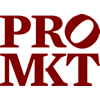Robert I. Field argues that private equity’s impact on price competition among nursing homes is limited because prices are mostly determined by Medicaid. However, private equity does impact quality and labor outcomes, which deserve greater government scrutiny.
This article is part of a series that explores how private equity reduces competition in the United States healthcare sector and the ways in which enforcers can respond. You can read the rest of the series as it is published here.
While the hospital and physician sectors tend to receive most of the public attention, nursing homes also represent a sizable portion of the overall health care industry. As such, they are a significant target for private equity investment. There are more than 15,000 nursing homes in in the United States serving more than 1.3 million residents. They were worth almost three billion dollars in 2023. It is estimated that 70 percent are for-profit with about nine percent of these owned by private equity funds. The total may actually be higher, as the complexity of many private equity business arrangements makes it difficult to derive exact numbers.
Nursing homes offer several attractive features for private equity investment. Among the most important is the steady stream of income they can generate. Medicaid is the primary source of funding for long-term care in the U.S., covering 60 percent of residents. Once a patient qualifies for coverage, its support is relatively stable. Some of the remaining residents have private long-term care insurance, which is another steady source of revenue. Nursing homes are also financially attractive because of the real estate they own, which can be quite valuable.
Beyond direct financial benefits, regulation of nursing homes tends to be uneven and therefore less intrusive than that of hospitals and physician practices. Oversight is fragmented across federal and state authorities, and state authorities are often under-resourced. This can limit scrutiny of aggressive financial restructuring arrangements implemented by acquiring firms, in particular, scrutiny of cost-cutting efforts that can lead to quality lapses.
Post-acquisition, private equity funds commonly maximize their financial returns by implementing substantial changes to the corporate structure that can lead to financial stress for the acquired nursing home. A common strategy is a sale-leaseback, in which the nursing home sells its real estate to an affiliated management company. The fund then uses proceeds from the sale to pay off the debt it incurred for the original purchase.
Stripped of its own building and grounds, the nursing home must then make lease payments to the management company as its landlord. The amount of the lease can increase annually, while the nursing home continues to be responsible for maintenance, taxes and insurance. The landlord may also charge a management fee. This leaves the facility with fewer resources to maintain the quality of its services. Fewer resources can also strain the long-term financial viability of acquired providers, although this is usually of little concern to private equity owners, who commonly aim to exit the business in as little as five to eight years. Once debt from the acquisition has been repaid and valuable assets such as real estate have been moved to an affiliated entity, there is little incentive to maintain the operation.
In addition to paying management fees to the landlord, the nursing home may also be required to obtain services from other affiliated companies that are part of a vertically integrated structure. These can include rehabilitation services, staffing help, pharmacy, hospice, facility management, payroll, and medical devices such as ventilators. Supporters of private equity point to the efficiency of obtaining services within a vertically integrated system, but it also blocks the facility from price shopping.
Similar financial practices of private equity acquirers are also used in other health care sectors, in some cases leading to the financial ruin of facilities that have been stripped of key assets. Private equity-owned health care companies enter bankruptcy at a much higher rate than public companies, accounting for 20 percent of health care bankruptcies in 2023. They are also more likely to be prosecuted for billing fraud. Acquired hospitals also tend to have fewer full-time equivalent employees, worse patient satisfaction scores, and lower performance on quality metrics. Among other effects of acquisitions are higher rates of adverse medical events, including falls, central line-associated bloodstream infections, and surgical-site infections.
The complicated corporate arrangements implemented by private equity acquirers makes enforcement of quality standards difficult. In addition to being complex, the arrangements are designed to be opaque, making it difficult for regulators to identify the entity within a private equity structure responsible for quality lapses. They can also obscure the flow of funds, so assets and profits are difficult, or impossible, to trace. If the task of following the flow of funds is daunting for regulators, it can be overwhelming for private attorneys suing in tort for compensation for harm.
Two common practices of private equity acquirers can be especially harmful for the safety and wellbeing of residents. The first is reduction in nurse–staffing levels. Laying off staff is an easy way to cut costs quickly after acquisition, and research has shown that for-profit nursing homes have fewer staff than nonprofit ones and rely more heavily on lesser-trained personnel. Facilities owned by private equity funds also typically pay lower wages.
To control noncompliant residents with smaller staffs, nursing homes often use a second practice of administering antipsychotic medications as a form of chemical restraint. These drugs make residents more docile, but they can cause serious adverse side effects. One analysis estimated that at least 20 percent of nursing home residents nationwide are administered these medicines and 80 percent are administered some form of psychotropic medication. Other research has found an association between lower staffing levels and greater medication use. Private equity ownership is associated with a greater increase in antipsychotic medication use than more traditional forms of for-profit ownership. Antipsychotic drugs can cause a number of serious adverse effects, including movement disorders, falls with injury, strokes, and heart attacks, resulting in higher mortality rates among residents who are taking them.
Practices such as lower nursing-staffing levels and greater antipsychotic drug use compound harmful practices that have been found to already be prevalent throughout the nursing home industry. Residents may be subject to physical abuse in the form of hitting or slapping, neglect of basic needs such as food and medical care, and emotional abuse. The effects of such abuses can include untreated infections, medication errors, malnutrition, falls, and bedsores. In acquiring nursing homes, therefore, private equity takes an industry already riddled with quality lapses and exacerbates them.
Defenders of private equity argue that it can inject much-needed capital into underperforming facilities and often improve care. The business literature contains many reports of such success stories. However, these instances do not diminish the widespread danger of acquisitions that have the opposite effect.
While regulators have tools for addressing the financial and quality abuses rampant in nursing homes, antitrust enforcement is not prominent among them. It can be effective in other sectors of health care, such as physician practices, in which private equity has consolidated ownership in markets to gain bargaining power with private insurers and caused price increases. However, nursing homes rely heavily on a government program for reimbursement, Medicaid, which determines reimbursement largely based on costs, not negotiation. Payments may increase because of increased costs after an acquisition but rarely because of decreased competition. Therefore, recent federal efforts to address health care dealmaking more generally, such as a joint initiative from the Federal Trade Commission, the Department of Justice, and the Department of Health and Human Services, are unlikely to be effective in addressing abuses involving nursing homes.
The primary facilitators of substandard nursing home care after private equity acquisition are the corporate structure and business practices the funds employ. Different regulatory approaches are needed to address them, and they can be most effectively implemented at the state level. Several states have already enacted laws to curtail private equity acquisitions or to block them entirely, but they only help nursing home residents within their borders.
For states that have not already taken action, and for some that have, emphasis should be placed on three strategies for enhancing oversight. The first would require greater transparency of ownership and corporate structures to help regulators identify the entities responsible for quality lapses and the location of funds within a private equity fund’s corporate structure. Nursing homes tend to be smaller entities than hospitals, so acquisitions are less likely to trigger federal scrutiny, however states could require more extensive reporting and greater transparency before approving transfers of ownership.
Greater transparency would also assist a second strategy of helping state Medicaid programs analyze facility cost reports to better determine the proportion of spending that is actually devoted to resident care and the proportion that goes to administrative expenses. Such scrutiny should start with an examination of rent, facility maintenance fees, and management fees paid by facilities to affiliated management companies under sale-leaseback arrangements. It should also assess prices charged for services obtained from other entities within a private equity fund’s vertically integrated structure.
Information obtained by state Medicaid programs on nursing home operations would facilitate a third strategy of more closely monitoring quality indicators. This can build on regulatory reforms of the Centers for Medicare and Medicaid Services (CMS), the federal agency that oversees Medicaid, that require reporting of nursing home quality measures as a condition for receiving reimbursement. CMS regulations also implement a star rating system for grading nursing home quality. However, the effectiveness of these efforts on their own is questionable. State regulators are closer to the facilities and to the residents and therefore in a stronger position to monitor and enforce compliance. They are also less prone to dramatic political shifts that can alter federal policy.
Private equity investment has taken an industry rife with substandard care and compromised much of it even further. Enhanced oversight of its quality and financial practices should be a national priority. If all states were to engage in more aggressive oversight, the welfare of residents in many of the nation’s nursing homes could improve considerably, and private equity funding could be channeled more consistently into enhanced resources for care rather than just greater returns for investors.
Author Disclosure: The author reports no conflicts of interest. You can read our disclosure policy here.
Articles represent the opinions of their writers, not necessarily those of the University of Chicago, the Booth School of Business, or its faculty.






